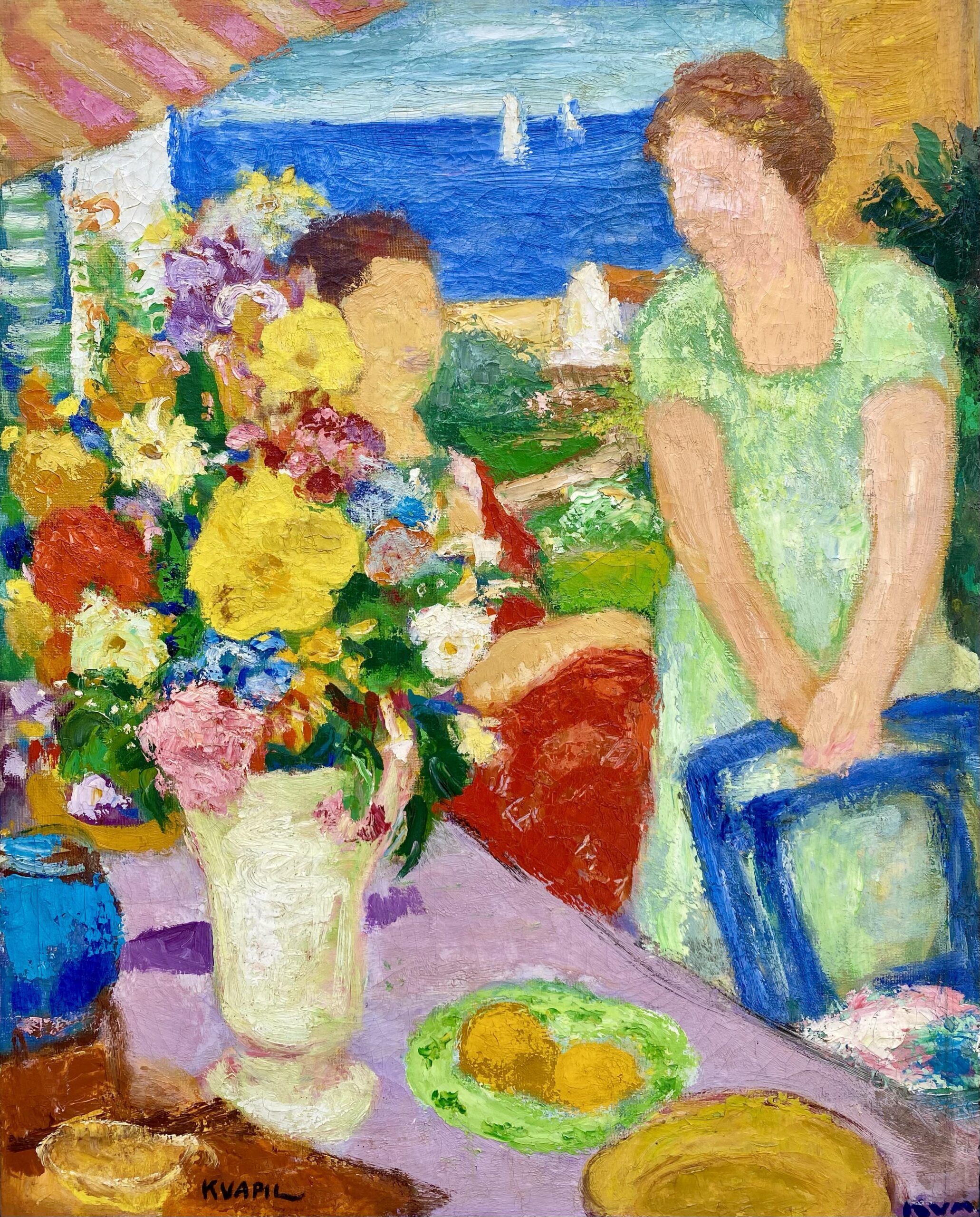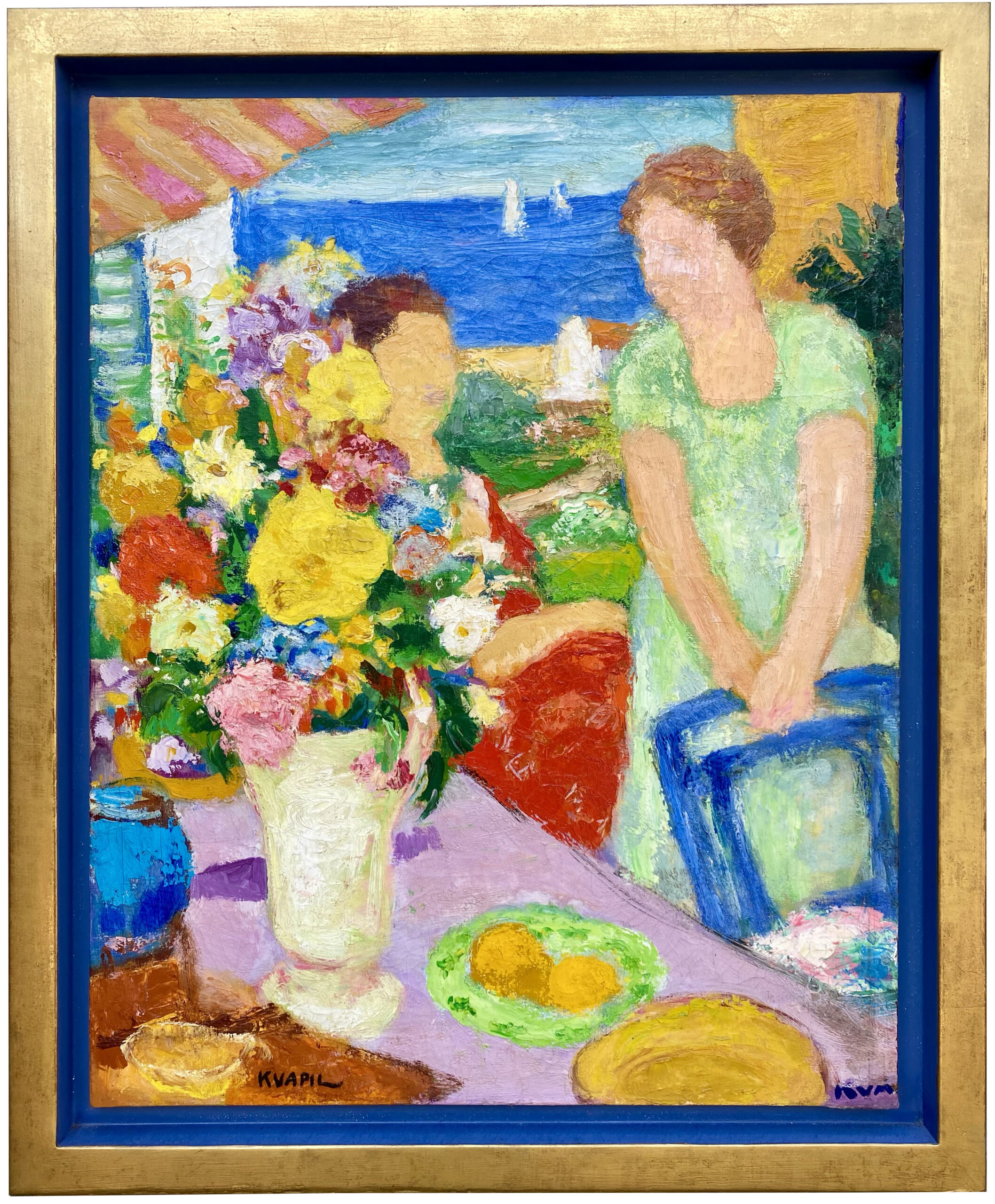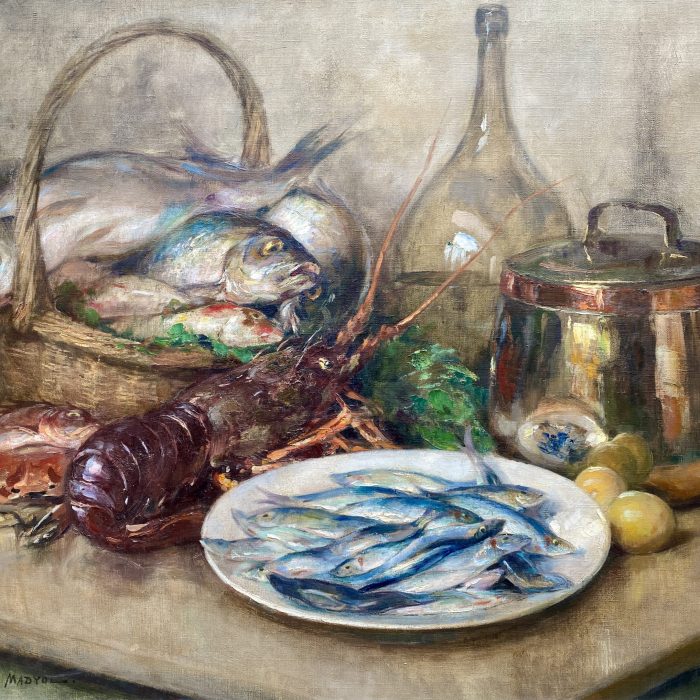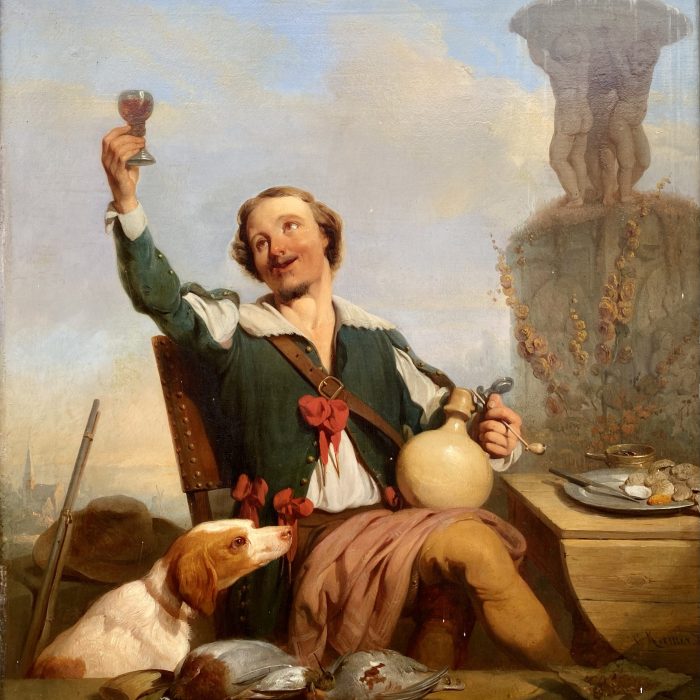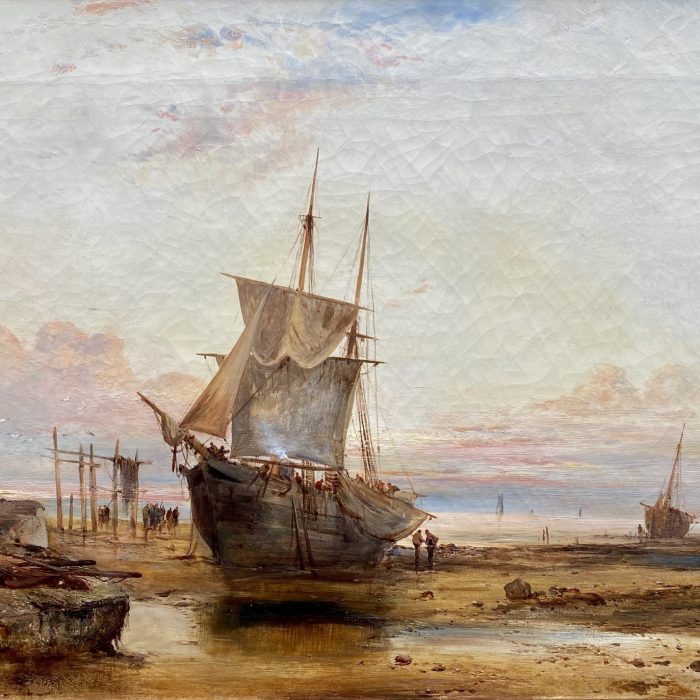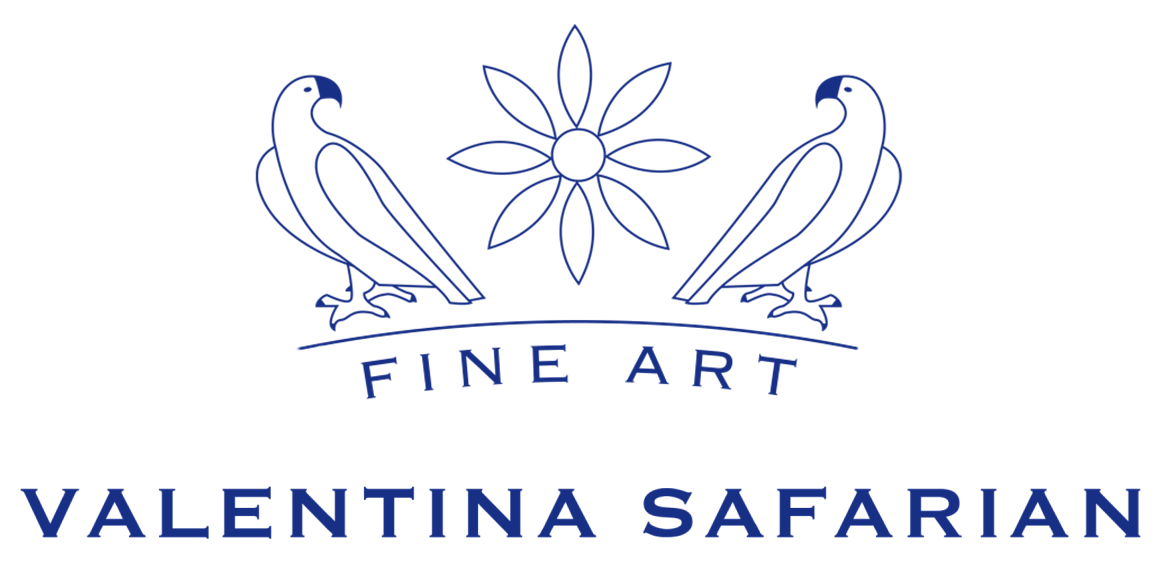Intérieur au Bord de la Mer – Interior by the Seaside
Charles Kvapil was born in Antwerp in 1884. From an early age he showed a remarkable sensitivity for form and color, which led him to pursue his artistic training at the Royal Academy of Fine Arts in his native city. Over the course of his career he explored a wide range of subjects such as portraits, nudes, landscapes, still lifes, interiors, and flowers, but it was as a figure painter that he truly distinguished himself. His best-known works feature full-bodied female nudes, painted with warmth and vitality, often in his Montmartre studio with the silhouette of the Butte Montmartre visible through the window behind the model. Like Courbet and the early Impressionists before him, he frequently portrayed bathers and groups of female nudes in outdoor settings, capturing both the sensuality and spontaneity of the moment.
Kvapil’s early work was first shown in 1908 at the Antwerp Salon, and his international career soon took flight. In 1911 he exhibited in Munich where his paintings reflected a clear influence of Cubism, an influence that remained present although more restrained in his later works. He returned to exhibit in Belgium in 1914 at the Brussels Triennial. Eventually Paris, and specifically Montmartre, became his artistic and spiritual home. It was there at the Salon des Indépendants in 1920 that Kvapil made a strong impression on the Parisian public and established his reputation in the French art world.
His mature style balanced realism and impressionism, enriched by references to Courbet and Renoir. He also absorbed the bold palette of Fauvism and the structural concerns of Cubism, although his approach remained lyrical and moderate. The influence of Cézanne can be seen in the way he constructed form, while the color sensibilities of Matisse echo subtly in his treatment of light and fabric. Kvapil and his circle of contemporaries placed great value on the technical aspects of painting. They immersed themselves in the study of the old masters, notably Rembrandt, Chardin, and Frans Hals, embracing the tradition of opaque, dense brushwork rather than the more transparent classical techniques.
Throughout his career Kvapil’s work was exhibited widely in Europe and beyond. He showed regularly in Paris at salons such as the Salon d’Automne where he presented notable works including Les Phlox in 1941, À la fenêtre in 1944, Plaisir d’été and Le Goûter in 1951. His paintings also appeared in exhibitions in Munich, Brussels, Geneva, Italy, Stockholm, London, and New York, affirming his international recognition.
Charles Kvapil died in Montmartre in 1958. Today his paintings are preserved in numerous public and private collections, a testament to the enduring appeal of his work. Institutions such as the Musée d’Art Moderne in Paris, as well as museums in Le Havre, Libourne, Rouen, Saint-Étienne, Amsterdam, and Tunis continue to celebrate his legacy. Kvapil’s art, rooted in tradition yet open to modernity, remains a vivid reflection of early twentieth-century European painting.

